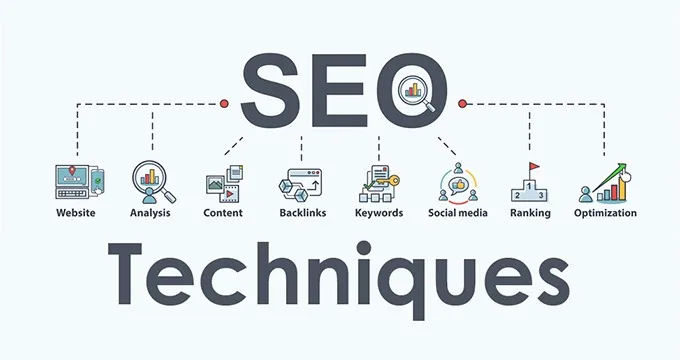Ranking high on Google is essential for increasing visibility, attracting more visitors, and driving business growth.
However, as Google’s algorithms become more sophisticated, staying on top of SEO best practices is more crucial than ever.
In this article, we’ll explore the best SEO techniques for 2024 to help your website achieve higher rankings, boost organic traffic, and stay ahead of the competition.
1. Performing Comprehensive Keyword Research
- Explanation: Keyword research is the foundation of any SEO strategy, helping you understand what your audience is searching for and how you can address those needs.
- How to Do It:
- Use tools like SEMrush, Ahrefs, or Google Keyword Planner to find high-traffic keywords with manageable competition.
- Focus on long-tail keywords that capture specific user intents (e.g., “affordable web design services for small businesses”).
- Identify search intent for each keyword to create relevant content—whether informational, navigational, or transactional.
- Best Practices:
- Incorporate primary keywords and related terms (LSI keywords) naturally throughout your content.
- Map keywords to relevant pages on your site to avoid keyword cannibalization.
- Regularly update keyword research to keep up with changing trends and search behaviors.
2. Creating High-Quality, Valuable Content
- Explanation: Quality content that answers user queries is key to ranking higher on Google, as it improves engagement metrics like time on page and reduces bounce rates.
- How to Do It:
- Write in-depth articles that comprehensively cover a topic, ensuring you provide real value and actionable insights.
- Use visuals like images, infographics, and videos to make content more engaging and easy to digest.
- Best Practices:
- Ensure content is original, well-researched, and free from plagiarism.
- Update old content regularly with fresh information, especially for topics that evolve over time.
- Focus on E-E-A-T principles (Experience, Expertise, Authoritativeness, and Trustworthiness) to build content credibility.
3. Optimizing On-Page SEO Elements
- Explanation: On-page SEO ensures each webpage is fully optimized for target keywords and provides a seamless user experience.
- How to Do It:
- Use target keywords in title tags, meta descriptions, and headers (H1, H2, etc.) naturally.
- Optimize images with descriptive alt text and compress them for faster load times.
- Best Practices:
- Keep title tags within 50-60 characters, and make them compelling to improve CTR.
- Use clear, concise meta descriptions to summarize the content and attract clicks.
- Add internal links to other relevant content to help users and search engines navigate your site.
4. Improving User Experience (UX) and Core Web Vitals
- Explanation: Google values a positive user experience, and Core Web Vitals (page load speed, interactivity, and visual stability) are direct ranking factors.
- How to Do It:
- Use tools like Google PageSpeed Insights or GTMetrix to test and improve site performance.
- Minimize CSS and JavaScript files, compress images, and leverage browser caching to speed up load times.
- Best Practices:
- Ensure your site’s design is mobile-friendly, as mobile usability is a key ranking factor.
- Optimize for interactivity and avoid annoying pop-ups that interfere with the user experience.
- Regularly test for usability across devices to ensure a smooth experience on mobile, desktop, and tablets.
5. Leveraging Internal Linking for Better Navigation and SEO
- Explanation: Internal linking helps distribute link equity across your site, guiding users to relevant pages and helping search engines understand content hierarchy.
- How to Do It:
- Link related content using descriptive anchor text that includes keywords where appropriate.
- Connect pages in a logical, hierarchical structure that aligns with your site’s navigation.
- Best Practices:
- Use a balanced number of internal links to avoid overloading a single page.
- Regularly update internal links when adding new content or modifying your website structure.
- Prioritize linking to high-value pages like services, products, or cornerstone content.
6. Earning High-Quality Backlinks
- Explanation: Backlinks from reputable websites improve authority and signal to Google that your content is trustworthy, boosting rankings.
- How to Do It:
- Create valuable, shareable content that naturally attracts backlinks, like in-depth guides or infographics.
- Reach out to industry influencers or collaborate with other sites for guest blogging opportunities.
- Best Practices:
- Focus on earning backlinks from high-authority sites in your niche to improve relevance.
- Avoid low-quality or spammy link-building tactics, which can lead to penalties.
- Monitor your backlink profile using tools like Ahrefs or Google Search Console to ensure link quality.
7. Optimizing for Featured Snippets and Rich Snippets
- Explanation: Featured snippets (position zero) provide direct answers to user queries, and optimizing for them can drive significant traffic.
- How to Do It:
- Write clear and concise answers to common questions in your content.
- Use structured data (schema markup) to enhance rich snippets with elements like reviews, ratings, and FAQs.
- Best Practices:
- Format content with lists, tables, and short paragraphs to increase chances of appearing in snippets.
- Use “how-to” or question-based headers (e.g., “How does SEO work?”) to capture informational queries.
- Test structured data with Google’s Rich Results Test to ensure it’s implemented correctly.
8. Enhancing Mobile Optimization
- Explanation: With mobile traffic accounting for a majority of internet usage, mobile optimization is essential for better rankings and user experience.
- How to Do It:
- Implement responsive design to ensure your site adjusts to different screen sizes.
- Test your site’s mobile performance using Google’s Mobile-Friendly Test tool.
- Best Practices:
- Ensure buttons, links, and text are sized appropriately for easy navigation on mobile.
- Avoid intrusive interstitials or pop-ups that obstruct content on mobile screens.
- Prioritize fast load times, as mobile users often have less patience for delays.
9. Utilizing Schema Markup for Structured Data
- Explanation: Schema markup (structured data) helps search engines understand your content better, improving your chances of enhanced search results like rich snippets.
- How to Do It:
- Use JSON-LD schema code for various content types, including articles, products, and FAQs.
- Implement specific schema types relevant to your content, such as LocalBusiness, Product, or FAQPage.
- Best Practices:
- Use Schema.org guidelines and Google’s Structured Data Testing Tool to validate markup.
- Avoid spammy or irrelevant markup, as misuse can lead to penalties.
- Regularly update schema for accuracy, especially for time-sensitive data like prices or events.
10. Creating Locally Relevant Content (for Local SEO)
- Explanation: If you’re targeting a specific geographic area, creating location-specific content can improve visibility in local searches.
- How to Do It:
- Publish blog posts or guides relevant to your local audience (e.g., “Best Hiking Trails in [City]”).
- Use local keywords in title tags, meta descriptions, and headers for better local ranking.
- Best Practices:
- Optimize for Google Business Profile, including accurate business information and local keywords.
- Build local backlinks from directories, local publications, and industry sites.
- Encourage customers to leave reviews on Google to improve local ranking signals.
Conclusion
SEO is a continuous process that requires ongoing optimization, adaptation to algorithm updates, and a commitment to providing the best user experience.
By focusing on these top techniques—from performing keyword research and optimizing for Core Web Vitals to building high-quality backlinks and leveraging schema markup—you can help your website rank higher on Google and attract more organic traffic in 2024.
Start implementing these SEO strategies today to boost your site’s visibility and stay competitive in search results.






